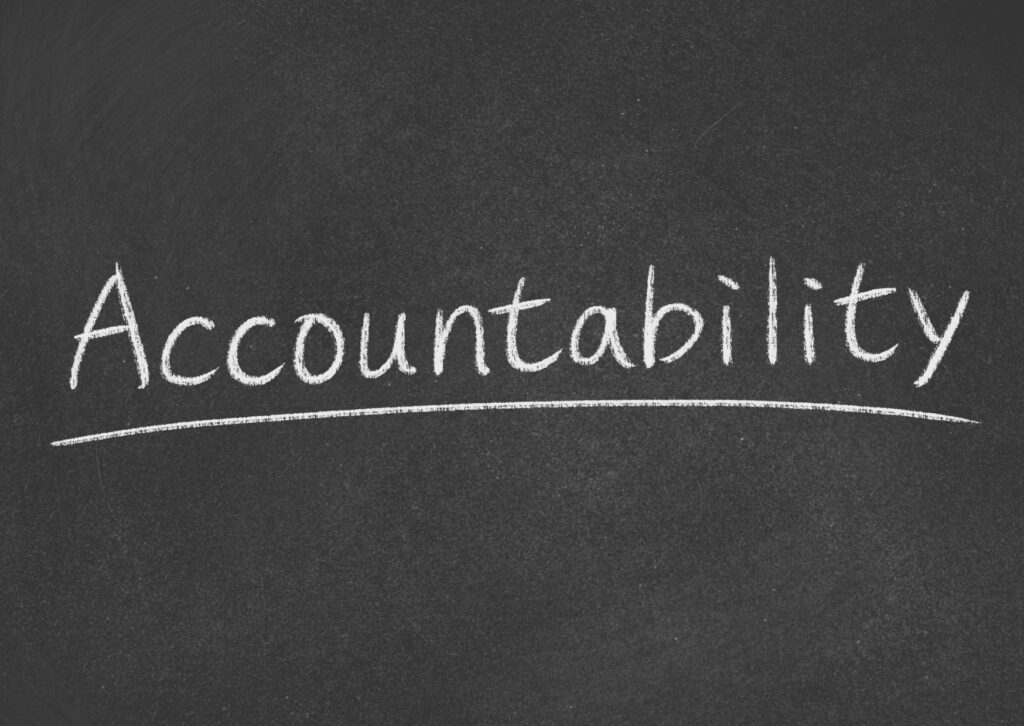10 Healthy Habits for Remote Workers to Thrive
Healthy habits for remote workers are more than just routines, they can be the foundation for a successful and healthy work-from-home lifestyle.
Remote work has become the norm for many and it’s important that their health and wellbeing is maintained.
With the shift to remote work comes unique challenges, especially when it comes to maintaining one’s wellbeing.
This guide will explore the significance of healthy habits for remote workers, the benefits they offer, and actionable steps to integrate them into your daily routine.
Whether you’re a remote work veteran or a newbie, these insights are designed to help you thrive in your professional and personal life.
Contents
10 Healthy Habits for Remote Workers
The Importance of Healthy Habits for Remote Workers
The Benefits of Healthy Habits for Remote Workers
How Remote Workers Can Implement Healthy Habits
10 Healthy Habits for Remote Workers
In the realm of remote work, habits play a defining role in shaping one’s day-to-day experience.
By integrating these healthy habits, remote workers can navigate the challenges of working from home while optimising their wellbeing and productivity.
1. Design an Ergonomic Workspace
One of the foundational habits for remote workers revolves around their workspace.
An ergonomic setup isn’t just about comfort, it’s about ensuring long-term physical health.
Here’s how to achieve it:
Adjustable Chair
Invest in a chair that supports the natural curve of your spine.
Your feet should rest flat on the ground, with your knees approximately at hip level.

Monitor Placement
The top of your screen should be at or slightly below eye level.
This prevents unnecessary neck strain from looking down.
Keyboard and Mouse
These should be placed in a way that your shoulders are relaxed, and your wrists don’t bend while typing or using the mouse.
Regular Eye Checks
Follow the 20-20-20 rule.
Every 20 minutes, look at something 20 feet away for at least 20 seconds to reduce eye strain.
Proper Lighting
Ensure that your workspace is well-lit, preferably with natural light, to reduce eye strain and boost mood.
At Loving Life, we deliver wellbeing webinars to educate employees on healthy habits and best practices while working remotely.

2. Set a Consistent Daily Routine
Routine is the backbone of productivity, especially for remote workers.
A structured day brings clarity, reduces procrastination, and ensures a balance between work and relaxation.
Here’s how to craft an effective routine:
Start and End Times
Just as you would in an office, set a specific time to start and end your workday.
This creates a psychological boundary between work and leisure.
Morning Rituals
Whether it’s a quick workout, meditation, or simply reading the news with a cup of coffee, morning rituals set a positive tone for the day.

Scheduled Breaks
Plan short breaks throughout the day to stretch, hydrate, or take a quick walk.
These breaks can rejuvenate your mind and body.
Task Lists
Begin your day by listing out tasks.
This not only gives a clear direction but also provides a sense of accomplishment as you tick them off.
Wind-down Routine
Just as you start your day with a ritual, have a routine to wind down.
This could be reading, listening to music, or spending time with family.
It signals your brain that the workday has ended.

3. Prioritise Physical Activity
Physical activity is often sidelined when working from home, but it’s crucial for both mental and physical wellbeing.
For remote workers, integrating movement into the day can combat the sedentary nature of desk jobs.
Here’s how to keep active:
Desk Exercises
There are several stretches and exercises designed specifically for those who spend long hours at a desk.
From neck rolls to seated leg lifts, these can be easily incorporated throughout the day.

Daily Walks
A simple walk, even if it’s just around the block or your backyard, can do wonders. I
t offers a break from the screen, fresh air, and a chance to clear your mind.
Home Workouts
With a so many online resources available, from yoga to high-intensity interval training (HIIT), there’s no shortage of home workout options to suit every preference.
Stand and Move
Consider investing in a standing desk or set an alarm to remind yourself to stand and move every hour.
Even a few minutes of movement can boost circulation and reduce muscle stiffness.
Stay Hydrated
Drinking water not only keeps you hydrated but also ensures you take short breaks as you refill your bottle or take restroom breaks.
Staying hydrated has so many benefits and it’s one of the things we talk about in our “Improve Your Physical Wellbeing Webinar”

4. Maintain Social Connections
Working remotely can sometimes lead to feelings of isolation.
Maintaining social connections is vital for mental health and provides a sense of belonging.
Here’s how to stay connected:
Virtual Coffee Breaks
Schedule regular virtual coffee breaks or catch-ups with colleagues.
It’s a chance to chat about non-work topics and bond with your team.

Join Online Communities
There are numerous online communities and forums for remote workers.
These platforms offer tips, support, and a space to share experiences.
Regular Check-ins
Beyond work-related meetings, have regular check-ins with your team or manager.
It keeps everyone aligned and provides an opportunity for feedback and discussions.
Engage in Virtual Team Building
Consider virtual team-building activities or games.
It’s a fun way to engage with colleagues and foster team spirit.
Stay Connected with Loved Ones
Working from home doesn’t mean being isolated from friends and family.
Regular calls, messages, or even virtual dinners can keep the bond strong.

5. Eat Balanced and Nutritious Meals
When your workspace is just a few steps away from the kitchen, it’s easy to fall into the trap of unhealthy snacking.
However, proper nutrition is vital for sustained energy and focus.
Here’s how to maintain a balanced diet:
Plan Your Meals
Start your day or week with a meal plan.
Knowing what you’ll eat for breakfast, lunch, and dinner can prevent last-minute unhealthy choices.
Healthy Snacks
Stock up on healthy snack options like nuts and fruits.
When the hunger pangs strike, you’ll have nutritious choices at hand.

Stay Hydrated
Drink plenty of water throughout the day.
Sometimes, our bodies confuse thirst with hunger, leading to unnecessary snacking.
Regular Eating Times
Set specific times for meals and stick to them.
This helps regulate your metabolism and keeps energy levels stable.
Mindful Eating
Avoid eating in front of your computer.
Take a break, savour your meal, and listen to your body’s hunger and fullness cues.

6. Set Clear Boundaries
One of the challenges of remote work is the blurring of lines between professional and personal life.
Setting clear boundaries ensures that you have time to recharge and reduces the risk of burnout.
Here’s how to establish those boundaries:
Dedicated Workspace
Even if you don’t have a separate home office, designate a specific area for work.
This mentally separates “work mode” from “home mode.”

Set Work Hours
Just as you have a start time, have a clear end time for your workday.
Once it’s time to log off, truly disconnect.
Inform Your Household
If you live with family or roommates, communicate your work hours and breaks.
This ensures fewer interruptions and establishes respect for your work time.
Digital Detox
After work hours, consider a digital detox.
Disconnect from work emails and apps to give yourself a genuine break.
Take Days Off
Just because you’re working from home doesn’t mean you shouldn’t take days off.
Regularly scheduled time off can help you recharge and return to work with renewed energy.

7. Embrace Continuous Learning
The world of remote work is dynamic, with new tools, techniques, and best practices emerging regularly.
Staying updated and continuously learning can enhance your efficiency and make your remote work experience more enriching.
Here’s how to embrace continuous learning:
Online Courses
Platforms like Coursera, Udemy, and LinkedIn Learning offer a plethora of courses on various topics.
Whether it’s mastering a new tool or understanding time management techniques, there’s a course for it.
Webinars and Workshops
Many organisations and experts host webinars and workshops tailored for remote workers.
These sessions can provide insights into the latest trends and best practices.

Reading
Blogs, articles, and books related to remote work can offer valuable insights.
Dedicate some time each week to catch up on the latest reads.
Virtual Networking
Engaging with other remote workers can provide a platform for knowledge exchange.
You can learn from their experiences, challenges, and solutions.
Feedback
Regular feedback from peers and superiors can be a learning opportunity.
It helps identify areas of improvement and growth.

8. Prioritise Mental Wellbeing
While physical health is essential, mental wellbeing is equally crucial.
Prioritising mental health ensures a balanced and sustainable remote work lifestyle.
Here’s how to take care of your mental wellbeing:
Mindfulness Practices
Techniques like meditation, deep breathing, and journaling can help centre your mind and reduce stress.

Breaks
Ensure you take regular breaks to step away from the screen.
A short walk, some stretches, or even a quick hobby can act as a mental reset.
Stay Connected
Regular interactions with colleagues, friends, and family can combat feelings of isolation.
Even a short chat can uplift your mood.
Seek Support
If you feel overwhelmed, consider seeking professional help.
Therapists and counsellors can provide coping strategies and support.
Hobbies
Engaging in hobbies or activities you love can act as a mental escape.
Whether it’s painting, reading, running or gardening, make time for activities that bring you joy.

9. Avoid Multitasking
While multitasking might seem like an efficient way to get more done, it often leads to decreased productivity and increased errors.
For remote workers, the temptation to juggle multiple tasks can be even higher, given the various distractions at home.
Here’s how to stay focused:
Single-Tasking
Prioritise tasks and tackle them one at a time.
This approach allows for deeper concentration and often results in better quality work.
Use Productivity Tools
Tools like Trello, Asana, or Todoist can help you organise tasks, set priorities, and track progress.
Set Timers
Techniques like the Pomodoro Technique, where you work intensively for a set period and then take a short break, can enhance focus and productivity.

Limit Distractions
Identify common distractions in your workspace, whether it’s the TV, social media, or household chores.
Set specific times to check on these, outside of your dedicated work hours.
Stay Organised
A clutter-free workspace can lead to a clutter-free mind.
Regularly organise your desk, files, and digital workspace to ensure a smooth workflow.
10. Regularly Review and Adjust
The world of remote work is ever-evolving, and what works for you today might not be as effective tomorrow.
Regularly reviewing and adjusting your habits ensures that you stay on top of your game.
Here’s how to keep evolving:
Self-Reflection
Dedicate time each week or month to reflect on what’s working and what’s not.
Are there habits that no longer serve you?
Are there new challenges you need to address?

Feedback
Seek feedback from peers, superiors, or even friends and family.
An external perspective can often provide valuable insights.
Stay Updated
As remote work trends evolve, new challenges and solutions will emerge.
Stay updated with the latest best practices and tools in the remote work realm.
Experiment
Don’t be afraid to try out new habits or routines.
Sometimes, a slight tweak in your day can lead to significant improvements in productivity and wellbeing.
Set Goals
Regularly set short-term and long-term goals for yourself.
This provides direction and a sense of purpose, ensuring you stay motivated and on track.

The Importance of Healthy Habits for Remote Workers
Habits play a pivotal role in shaping our daily lives, especially when our home doubles as our workplace.
For remote workers, the lines between professional tasks and personal chores can often blur, leading to potential burnout, decreased productivity, and health issues.
Here’s why cultivating healthy habits at home is importance:
Mental Wellbeing
Remote work can sometimes lead to feelings of isolation and loneliness.
Healthy habits, such as regular breaks and social interactions, even if virtual, can combat these feelings, ensuring mental stability and happiness.
Physical Health
Without the daily commute or the need to walk to a colleague’s desk, physical activity can take a backseat.
Incorporating habits like stretching, regular exercise, and ergonomic workspace setups can prevent sedentary-related ailments.

Productivity Boost
A structured routine, punctuated with healthy habits, can significantly enhance focus and efficiency.
When you know when to work, when to take a break, and when to call it a day, you can accomplish tasks more effectively.
Work-Life Balance
Healthy habits help delineate work hours from personal time.
This distinction is crucial to prevent overworking and to ensure quality time is spent with loved ones or on personal pursuits.
Longevity in Remote Work
To sustain a remote working lifestyle in the long run, one needs more than just a good internet connection.
Adopting and maintaining healthy habits ensures that you remain fit, both mentally and physically, making remote work a viable long-term option.
While remote work offers flexibility, it also presents challenges that can impact one’s wellbeing.
Healthy habits act as the bridge, ensuring that remote workers not only meet their professional goals but also lead a balanced and fulfilling life.

The Benefits of Healthy Habits for Remote Workers
While understanding the importance of healthy habits is the first step, recognising the tangible benefits they bring can be truly motivating.
Here’s a closer look at the advantages remote workers can reap by integrating healthy habits into their daily routines:
Enhanced Concentration
Regular breaks, proper nutrition, and adequate sleep can significantly improve focus.
When the mind is well-rested and nourished, it’s easier to concentrate on tasks, leading to better quality work in shorter timeframes.
Reduced Stress Levels
Healthy habits like meditation, deep breathing exercises, and maintaining a clear distinction between work and leisure can help in managing and reducing stress.
This is often a common concern among remote workers.

Boosted Energy
Physical activities, even short bursts of exercise or stretching, can invigorate the body, providing a much-needed energy boost.
This can be especially beneficial during mid-day slumps.
Improved Physical Health
Regular movement, ergonomic workspaces, and balanced meals contribute to overall physical health.
This helps to reduce the risk of chronic ailments like back pain, obesity, or eye strain.
Better Mental Health
Social interactions, even if virtual, and taking time for self-care activities can uplift one’s mood.
This can contribute to combating feelings of isolation, and promote better mental health.

Higher Job Satisfaction
When you feel good physically and mentally, it reflects in your work.
This not only leads to higher productivity but also greater job satisfaction and a more positive outlook towards tasks.
Enhanced Work-Life Balance
By setting boundaries and allocating specific times for breaks, relaxation, and family, remote workers can achieve a harmonious work-life balance.
This can lead to a happier and more fulfilling personal life.
Long-term Sustainability
Healthy habits ensure that remote workers can continue this mode of work in the long run without facing burnout or health issues.
This makes it a sustainable choice for the future.
The benefits of healthy habits go beyond just physical wellbeing.
They encompass mental health, job satisfaction, and overall life satisfaction, making them indispensable for anyone looking to thrive in a remote work environment.

How Remote Workers Can Implement Healthy Habits
Implementing healthy habits as a remote worker might seem overwhelming, but the key is to approach it step by step.
Here’s a structured approach to seamlessly integrate these habits into your daily routine:
Start Small
Instead of overhauling your entire routine, begin with one or two habits.
This ensures you don’t feel overwhelmed and can focus on mastering each habit before moving on to the next.
Consistency is Key
It’s better to practice a habit consistently, even if it’s in small doses, than to do it sporadically.
For instance, a 10-minute daily workout is more effective than an hour-long session once a week.
Set Clear Intentions
Understand the ‘why’ behind each habit.
When you’re clear about the benefits and the reasons you’re adopting a habit, you’re more likely to stick to it.
Use Technology
Leverage apps and tools designed to foster good habits.
Whether it’s a task management app, a hydration reminder, or a meditation guide, technology can be your ally.
Accountability Partners
Share your goals with a friend or colleague.
Having someone to check in with can provide motivation and keep you accountable.

Celebrate Milestones
Recognise and celebrate small achievements.
Every milestone, no matter how minor, is a step towards a healthier remote work lifestyle.
Stay Adaptable
If a particular habit isn’t working for you, don’t be disheartened.
Adjust, adapt, and find what suits your unique needs and circumstances.
Educate Yourself
Continuously seek information about the benefits of healthy habits.
The more informed you are, the more motivated you’ll be to persist.
Routine Check-ins
Every few weeks, take a moment to reflect on your progress.
What’s working?
What challenges are you facing?
This reflection can guide your next steps.
Seek Support
If you find it challenging to implement a habit, consider seeking external support.
This could be in the form of online communities, workshops, or even professional counselling.
For more help on creating habits, why not check out our blog on “4 Steps to Create Life-Changing Habits” to help you get started.
Remember, the journey to cultivating healthy habits is a marathon, not a sprint.
Be patient with yourself, and recognise that every effort you make is a step towards a healthier, more balanced remote work experience.

As we’ve explored, the right habits can profoundly impact our productivity, health, and overall satisfaction.
While the journey to integrate these habits may require effort and persistence, the rewards are well worth it.
As remote workers, we have the unique opportunity to design our work-life in a way that aligns with our personal and professional goals.
At Loving Life, we help companies support the health and wellbeing of their employees with our employee wellbeing services, whether it’s remote or in person.
Get in touch for more info!!
Author
Tyler Lowe – Health & Wellbeing Speaker
BSc Sport & Exercise Rehabilitation


